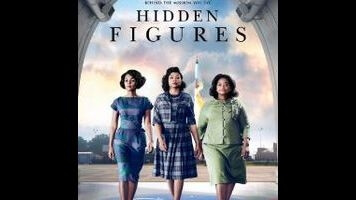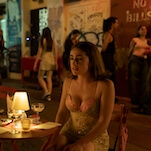The movie can’t exactly be called regressive, but one behind-the-scenes element stands out as such. The director/co-writer of this movie about three black women working at NASA during the space race is Theodore Melfi, a white man. It’s hard to buy the usual logic about simply picking the best filmmaker for the job, because Melfi is a functional and only marginally experienced big-studio director with a demonstrable weakness for cuteness and obviousness. He doesn’t botch the stories of Katherine Johnson (Taraji P. Henson), Dorothy Vaughan (Octavia Spencer), and Mary Jackson (Janelle Monáe), but as with his feature debut, St. Vincent, he lets his cast provide most of the movie’s distinction.
It’s a stacked one, even if everyone included has been better in other movies. Taraji P. Henson, taking her first leading film role since Empire shot her to stardom, is far away from Cookie as nerdy, unglamorous math prodigy Katherine, who is seen in a brief prologue doing algebra as a small child. Yet in a much more subdued part, Henson does a kind of quiet overacting, constantly pushing her glasses up her nose and often seen running through the halls of NASA with binders clutched to her chest, a retro-sounding Pharrell Williams tune providing musical accompaniment. She’s forced to rush between different sections of the NASA campus due to segregated restrooms, until, for one Oscar-clippy scene, she throws in some traditional noisy overacting as she stands up to her uncomprehending boss. Because Henson is a good actor and Katherine is a likable character, it’s satisfying. Because the script doesn’t have much to offer beyond the basics, it’s not a great scene.
There is one bit of savvy in the way Hidden Figures follows two additional storylines beyond Katherine’s. Spencer’s Dorothy, who works as a supervisor without that official title or pay, takes it upon herself to learn new IBM technology, fearing for her obsolescence, while Monáe’s Mary pushes for the move from the computing room to engineering, despite the racial barriers in her way. Put together, the movie does offer a well-rounded portrait of institutional racism. An earlier film might have insisted on personifying prejudice via one or two unrepentant bad guys, but Figures emphasizes how racism can spread by the simple process of complacent people following orders. NASA administrator Vivian Michael (Kristen Dunst), for example, isn’t trying to repress non-white people, but she’s not going to stick her neck out to right any societal wrongs.
Fortunately for white folks, Hidden Figures also has Kevin Costner, patron saint of white characters who might seem racist but aren’t, darn it, playing Al Harrison, Katherine’s new boss when she’s enlisted to help figure out rocket trajectories for the first manned space mission (and, eventually but unseen in the film, the moon landing). Costner is good at playing no-nonsense, just as his Black And White co-star Spencer is, and just as Monáe is convincing as the most fired-up of the three women. Like Henson, they all give decent performances with nary a surprising moment or acting choice among them.
It’s hard to blame the actors, though; lack of surprise is in this movie’s bones. With a script that finds creatively awkward ways of incorporating clichés into its dialogue (“The kids need to eat their vegetables… you’d know that if you were ever home”), Melfi best communicates the characters’ circumstances in silent moments, like when Katherine notices the discomfort she causes by pouring coffee from the same pot as her white co-workers, or the way her deskmate handing her their phone feels conciliatory. The little moments don’t add up, though. For all of its current touchstones, Hidden Figures feels far too late, both in the recognition these women deserve and the filmmakers’ goodhearted but dull approach to their stories.









































